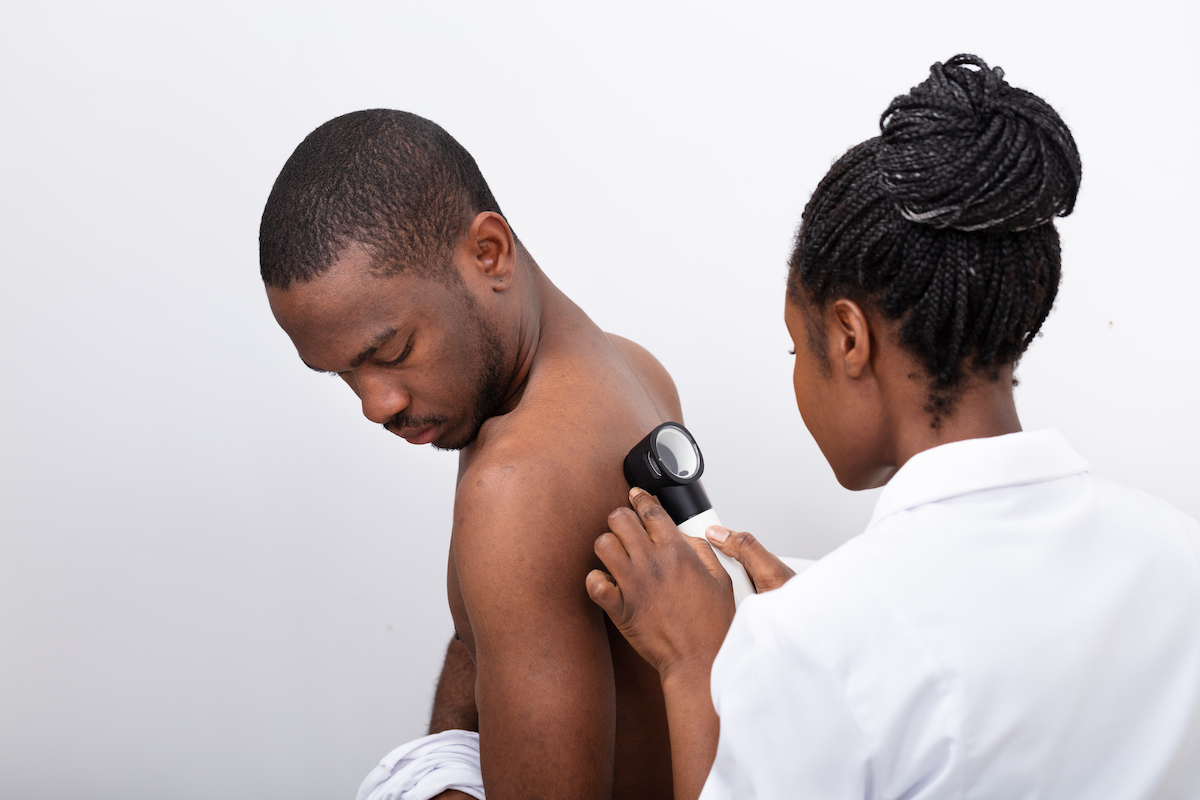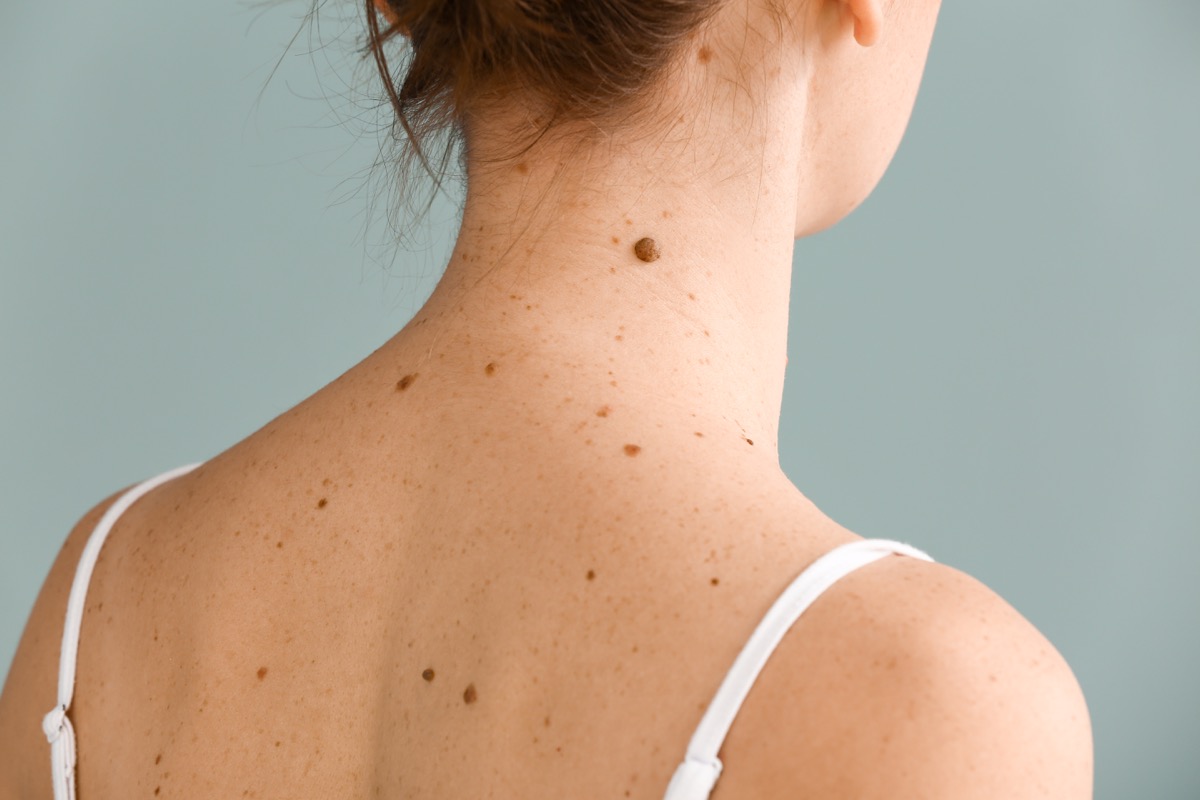Dermatologist and Mohs surgeon Susan Bard, MD, says dermatologists tend to take a streamlined approach to decipher which moles pose a potential risk and which are likely benign. They use the acronym “ABCDE,” which stands for asymmetry, border, color, diameter, and evolution.ae0fcc31ae342fd3a1346ebb1f342fcb To see if you’re experiencing another concerning symptom, check out If You Feel This at Night, You Need to Get Your Liver Checked, Doctors Say. When it comes to the diameter, most dermatologists say that if you notice a mole that’s wider than a pencil eraser (about five millimeters) or larger, you should make an appointment to get it checked out. “Moles are typically pretty small. You may have some variation in mole size throughout your body, but overall a regular mole will be smaller than a pencil eraser,” according to the experts at North Pacific Dermatology in Washington. “When your dermatologist is performing a mole evaluation or a skin cancer screening, they will be looking for moles that exist outside of these normal diameters. If there’s a mole larger than a pencil eraser, your dermatologist will likely want to look at it more closely or have it removed, just to be safe.” And for more useful health tips delivered straight to your inbox, sign up for our daily newsletter. With the “E” in the ABCDE model standing for “evolution,” that means any change in the mole could be cause for concern. “Evolving moles are a key early sign of different types of skin cancer. If you notice that one of your moles is changing in shape, size, or color on a consistent basis, it’s time to see your dermatologist for an evaluation,” the professionals at North Pacific Dermatology write. “Mole evolution can be a sure sign of irregular cell growth, and any evolving moles on your skin need to be looked at as soon as possible.” And for more helpful information about the most common kind of cancer, here are 27 Skin Cancer Facts Doctors Wish You Knew About. According to North Pacific Dermatology, asymmetry is one of the earliest signs of skin cancer in a mole. If one half of your mole doesn’t resemble the other half, you should get it checked out. Also, if the border of your mole is irregular, for example, “scalloped or jagged rather than smooth or evenly contoured,” dermatologist Julie Karen, MD, says to see your doctor. Similarly, a mole that’s irregular in color could be cause for concern. Karen says to look out for multiple colors or shades of colors existing in the same lesion. Additionally, Bard says that a mole that’s black, blue, red, or has a loss of color is reason enough to make an appointment with your dermatologist. To see if you have this subtle symptom that’s easy to miss, check out If You Notice This on Your Nails, Get Your Thyroid Checked, Doctors Say.



